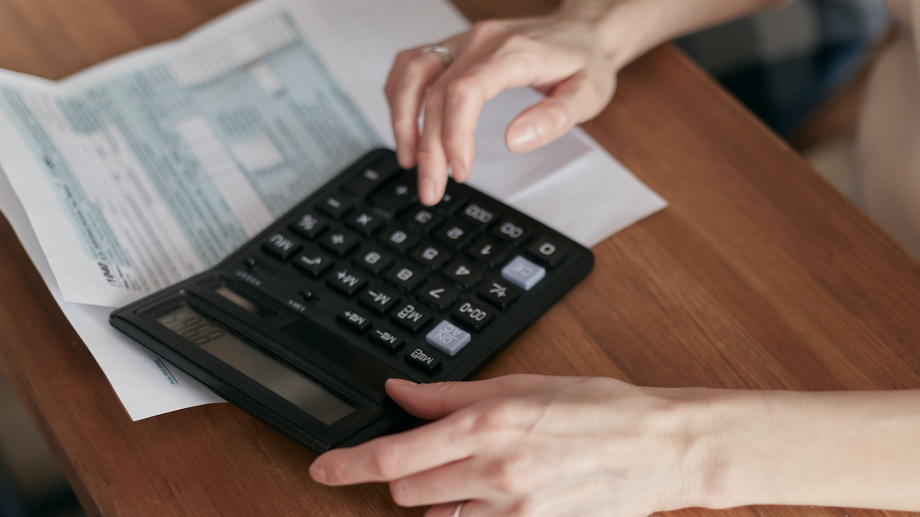
Automate the reading of dial and analog meters
Many utility companies are moving towards greater digitization, but still serve communities with dial or analog meters. At first glance, these non-smart meters could seem like a barrier to digital transformation.
However, modern scanning technology has made it possible to automate dial an analog meter reading, so they can be digitally submitted to your system.
In this blog, we will answer the most common questions about digitizing such meters:
- What problems exist with dial and analog meter readings?
- In which areas are dial and analog meter readings still used?
- How can you digitize dial and analog meters?
- What benefits are there to OCR?
- Best practice example
- How can Anyline be integrated?
Jump to key topics
Jump to key topics
1. What problems exist with dial and analog meter readings?
Gathering dial and analog meter readings can lead to many issues for utility providers Here are just a few of the most common issues.utility
Incorrect Meter Readings
Mistakes in meter readings are common due to the repetitiveness of the work. Counting digits isn’t hard, but when a technician or resident enters this data manually, it can be easy to make a mistake, especially when they are tired or distracted. What’s more, with dial meters, it is easy for the reader over- or under-estimate the energy used if the dial or analog reading is currently between two different numbers.
Electricity losses
Non-technical losses, or NTLs, are non-billed or incorrectly billed electricity, as well as illegal or fraudulent use of electricity. This can be caused by meter tampering, billing irregularities, or theft. But commercial losses are due to human factors. This can occur as a result of the wrong measurement, energy bills that are incorrect or not paid, and meter misreading.
Energy fraud
Energy fraud is the largest non-technical loss suffered each year, especially in developing countries. For example, an estimated $16 billion revenue is lost in India every year. Fraud can mainly be caused by two things:
- When someone tampers with their meter to alter the results, they may end up paying much less or nothing for their gas or electricity. They are stealing from suppliers.
- When customers bribe the employee to record a wrong meter reading, or to record the reading of another meter with a lower consumption. Without a strong process to ensure the right meter is read, utility companies have little to no recourse against this type of fraud.
2. In which areas are dial and analog meters still used?
Utility providers often have to handle a combination of legacy analog and dial meters within their networks, alongside newer smart meters. Even for providers aiming to upgrade their meters, restrictions could mean that older meters stay part of the system. Here are a few factors to consider:
The choice to equip customers with digital smart meters or analog meters doesn’t always go to utility companies. There are many aspects to take in consideration when studying the possibility for a network to use one or another:
- Distortion/ Noise. Distortions or any type of noise in electric circuits can impact analog meters, but not digital versions. In fact, some digital meter brands include distortion prevention, such as low impedance mode, to reduce this.
- Power supply. Analog meters do not require a power supply to operate, while digital multimeters need alkaline batteries or some other power supply.
- Durability. Analog meters are a better option than digital when it comes to durability since they are built to be tough tools. Even very old models continue to work. Digital multimeters have a lower life expectancy though some brands last longer.
- Price. While digital multimeters are evolving with technology to provide better results and to provide technicians with more reliable information compared to analog multimeters, digital models are more expensive by far which can be a serious drawback in developing markets.
In remote areas where durable, noise-sensitive, cheaper smart meters still need a power supply, analog still tends to be more commonly used.
3. How can you digitize dial and analog meter readings?
A solution for reducing the number of incorrect meter readings is the use of AI-based technology called Optical Character Recognition (OCR). With it, utility companies can equip their employees with a tool that scans meters within seconds, directly integrated to their smartphone or any device as long as it’s equipped with a camera.
The OCR technology identifies the numbers displayed within milliseconds and sends that information securely and without interference from any other third-party to your server.
Utility workers can scan other information with the device as well, including meter barcodes and serial numbers. Companies can reassure customers their meter readings are accurate.
Another solution is to provide a website or mobile app which integrates OCR technology, like Anyline’s. When made accessible to the consumer, they can use any smart device with a camera to scan their own meters and send the reading directly to their utility provider. That reduces the risk of customers tampering with meters.
4. What benefits are there to OCR?
OCR technology has numerous advantages:
- Accuracy. Anyline’s OCR technology is 99% accurate, and that’s guaranteed. It’s nearly impossible for anyone to make a mistake during the meter reading process.
- Time-saving. The process is not only easier but faster. Anyline’s OCR technology scans 20 times faster than a human could collect the same data. That reduces the number of working hours spent using manual methods.
- Less stress. It’s less stressful for utility workers. They can ensure fast and reliable readings, getting more work done. Yet they do not have as much stress in the process since they do not have to manually enter information. Because they can do more, quicker, they are less overwhelmed by the work they have to do.
- Saving resources. Utility companies save a significant amount of money by speeding up the data collection and therefore seeing workers be more productive. There are also opportunities to use mobile apps that allow customers to handle the data collection. There is less risk of worker burnout.
- Reducing NTLs. OCR technology can also help utility providers reduce fraud. In addition to scanning meter readings, it is possible to scan additional information, such as meter ID number or barcode, and each scan can be geolocalized and timed. It ensures that the right meter is scanned and no fraud is happening on that side.

5. Best Practice Example
One company that has made the switch to automate dial and analog meter readings is Northumbrian Water. The company provides water and sewerage services to 2.7 million people in North East England and supplies water in South East England, where it operates as Essex and Suffolk Water.
The company has integrated Anyline self-reading technology for water meters into its customer-facing application. Customers scan their own meter readings using a smartphone or smart device. This improves customer experience and enables the customers to manage their water consumption more efficiently.
6. How can Anyline be integrated?
Anyline’s data capture technology can be integrated directly into the utility company’s existing system and mobile apps. By integrating Anyline’s OCR technology, utility companies can not only reduce investment costs as well as ownership costs, but they can also guarantee an easy use for their workers as they are already familiar with their own smart devices and therefore do not need to learn handling a new device.
Anyline utility mobile meter reading technology integrates into an app using its software development kit (SDK). It is fast and easy to then scan data. Anyline’s SDK is also backed up by hands-on support from a team of customer service reps who are always available to help.
These tools work with Android and iOS smartphones and devices. It also offers support for frameworks such as Xamarin, React Native, Cordova and Flutter.
You can find out if mobile meter reading is the right solution for you by downloading our Energy & Water Demo App to test its capabilities.



